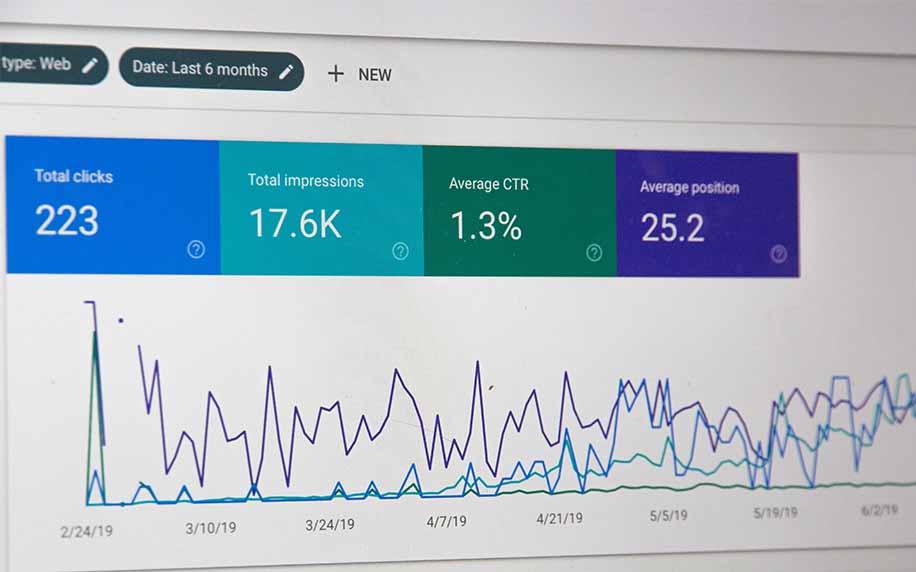What is an SEO Audit?
To audit your site, you should focus on three core areas of your SEO strategy:- Technical,
- On-Page,
- Off-Page.
Technical SEO Website Audit
- Accessibility – This is considered the top priority. If done correctly, no one will have issues accessing and moving around the website.
- Indexability – Whether or not the website is crawled by the search engine. Optimizing this will improve the site’s performance.
- Performance – Your site needs to perform properly to rank well on Google. Broadly, this includes key variables like load speeds and security.
On-Page SEO Audit
The on-page SEO audit deals with how the content looks on the website. This is pretty general, but during the SEO website audit, any problems with the content are fixed. Quick fixes include:- Unique Titles – These have to be unique for each page. Tells your reader what the page is about. Each title is between 50-65 characters.
- URL Structure – URLs should be clean and unique for every page and formatted correctly. Be sure to have your keyword included in your URL.
- Description Tag – This should be between 150 – 160 characters. It’s crucial that you’re not stuffing keywords into the description tag.
- Content-Length – This has been discussed at length, but it’s always best to have content that’s long at least 500 words. If your content is less than that, there’s a chance it.
Unique Content:
Having quality content is the biggest part of ranking better than other websites. Copyscape is an SEO audit tool used to check the uniqueness of each page and to check for duplicate or plagiarized content.Formatting:
Having plain text won’t work. Each page is properly formatted with the H1 (Title), and multiple H2’s (subheadings). Use bold, italics, and lists when needed.Google Analytics:
Google Analytics finds your most popular pages. These pages are entirely free of spelling mistakes, grammar issues, wrong information, or incorrectly formatted content.Redirect Similar Pages:
With duplicate or similar pages, the 301 redirect directs your readers to the popular page. Everything on the site should be fresh to improve rankings. While posting every day is not needed, a regular schedule is recommended.Internal Linking:
Another important SEO website audit task is using internal linking. Most people create content but don’t link to their website. Not only is this helpful to your readers, but search engines will take notice. Each page should have at least two internal links but no more than 10.Fix Links:
While on the topic of links, check for broken links. Broken links are a horrible user experience. There are multiple tools to use when checking external links. The other option is the “raw errors” report on Google. Three-hundred-one redirects are the best and easiest way to fix broken links.Images:
Images add a high-quality look to your page while making it easier to read. During the SEO website audit, there are three things to check:- Filenames describe what your image is. Keywords can be used.
- Every single image needs an ALT tag description.
- Every image is compressed to the smallest size.
Off-Page SEO Audit
Once you have fixed everything on your page, it’s time to focus on the off-page audit. The off-page audit checks the results to see the website’s popularity. During this time, we’ll check to see whether or not people are linking to and which websites have your links. The more websites that link to your site, the more trustworthy it’s considered.How to Perform an SEO Audit in 8 Steps
Before you start planning this SEO campaign, it is important to have a good idea of where your website stands in the eyes of search engines. You can do this by performing at least one SEO audit on your website. Here is a guide that will help you perform the first SEO audit for your site. There are some pieces of software that will be useful to have – some will be free, some may have a charge. These will range from webiste crawling to a rank tracker, so you can measure any changes you make in your efforts to rank higher.Step 1. Use Screaming Frog Crawl
The first thing you should do is use a program like Screaming Frog to crawl your website. This will identify the following during your SEO audit:- Errors – 404 pages and other server and client issues.
- Redirects – Temporary or permanent redirects (301, 302).
- External links – All of the sites your website links to.
- URL issues – Uppercase characters, underscores, lengthy URLs and dynamic URLs.
- Duplicate pages – Pages with duplicate content.
- Page title tags – Short, long, missing, or duplicate page title tags.
- Meta description tags – Short, long, missing, or duplicate meta description tags.
Step 2. Use Google Webmaster Tools and Analytics
You should register your website or blog with Google Webmaster Tools. If you don’t have Google Analytics, you should sign up for it. Use the Google Webmaster Tools and Analytics to measure the health of your website and to pinpoint crawl errors that Google is encountering during your SEO audit. You will be able to know how fast your website loads and more. There is a guide that will teach you about all the features of the Google Webmaster Tools.Step 3: Keywords
Now that you have data about your title tags, meta keywords and meta descriptions from Screaming Frog, you can determine what your website is attempting to rank for. Use this data along with the keyword data from your Google Analytics to figure out which keywords your website or blog is getting traffic for. Take the keywords from Google Analytics and Screaming Frog and enter them into the Keyword Planner. This tool will provide you with a list of keyword ideas – an essential tool in your SEO audit. One of the main advantages of Google’s Keyword Suggestion tool is that it will provide you with information about how competitive various keywords are. You will also be able to know the number of times the keyword has been searched worldwide. This is referred to as ‘global searches’. You will also know the number of local searches for the keyword every month. All searches for a keyword in your country are local searches. Both the Keyword Suggestion Tool and Screaming Frog will help you compare the keywords you are targeting with those you could be targeting. Be sure to keep the following in mind when using the Keyword Suggestion Tool for your SEO audit:- Local searches matter more – Since a U.S. website is more likely to rank well in the United States, you should focus on local rather than global searches.
- Don’t target the most competitive keywords – You should focus on keywords that are not competitive but receive a significant search volume.
Comparing Keyword Tracking Tools:
When selecting a keyword-tracking platform, consider the following features:
- Keyword data – Rankings, search volume, CPC, competition metrics
- Ranking tracking – Track website and competitor rankings in SERPs
- Alerts – Get notified when keywords hit specific ranking milestones
- Reporting – Customizable ranking reports and charts
- API integration – Connect with other analytics platforms like Google Analytics
- Export options – Download ranking data as CSV/Excel
Top tools include:
- Semrush – Robust keyword data, rank tracking, and reporting. Competitor analysis. Higher pricing tiers.
- Ahrefs – Tracks rankings across 210+ countries. Alerts and reporting. 7-day trial available.
- Moz – Full keyword data plus rank tracking. Good reporting and API options.
- Serpstat – Affordable plans as low as $15/month. Tracks Bing and Google.
- Rank Tracker – Specialized rank checker just for rankings. Free version available.
Statistics to Add:
- 72% of marketers say they check keyword rankings at least 2x per month, according to an Impact survey.
- The average CTR for the top 3 rank positions is between 10-20%, a key benchmark for high-volume keywords.
- Websites that track keywords weekly long-term see 133% more organic traffic on average (JumpFly study).
Step 4: URLs
When you view your report from Screaming Frog, you will see an entire list of URLs. Here are a few tips that will help you analyse URLs:- Static – You want to have static rather than dynamic URLs. While a static URL contains letters, numbers and dashes, a dynamic URL contains $, =, %, +, and other random letters.
- Short length – If possible, you should keep your URLs short and under 100 characters.
- User-friendly – You should have URLs that will be easy for users to remember. Eliminate slashes and dashes that aren’t needed.
Step 5: Title Tags
One of the major misconceptions about title tags is that character limits are how Google and other search engines measure them. However, Google actually counts the pixels to measure title tags. Therefore, you should export title tag data from the Screaming Frog report to your Excel spreadsheet. Change the font type of the data to Arial and the font size to 12. This is what Google does when evaluating your title tags. Set the Excel column width to 520 pixels, which is the cut-off limit of Google. Three hundred twenty pixels is considered too short, while 520 pixels is considered too long. Here are the guidelines you should follow to change your title tags:- Limit title tags to 50 to 65 characters.
- Use unique title tags for every page.
- Use the keyword for the specific page once if there is enough space.
- Include a geo-qualifier if it is relevant.
Step 6: Meta Descriptions
One of the main mistakes that companies make when it comes to their meta description tags is keyword stuffing. Of course, you should put keywords in your meta descriptions. However, you also want your meta descriptions to be engaging and readable. An engaging meta description will encourage people to click on the link to your website in the search results. If you don’t have duplicate or missing meta description tags, here are a few guidelines for writing excellent meta descriptions:- Ensure the meta description is relevant and unique to the page.
- Write the meta description with a call to action and descriptive ad text.
- The meta description should not exceed 160 characters, including punctuation and spaces; the ideal is 140-150 characters (fewer than 51 characters is considered too short).
- The meta description should consist of one to two complete sentences with proper punctuation and no greater than five commas.
- Use the keyword once for each sentence; the keyword should be closer to the beginning of each sentence.
- Include geo-qualifiers if relevant.


